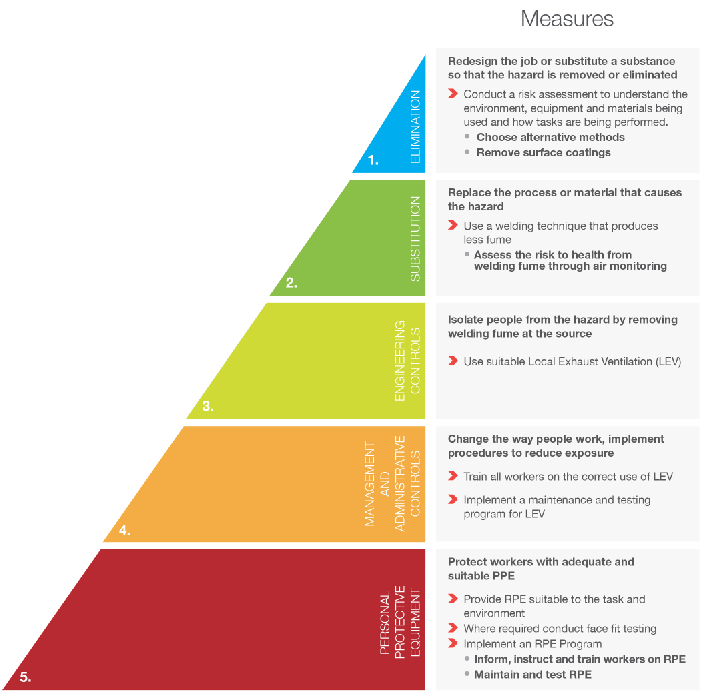
The Health and Safety Executive (HSE) has released a safety alert announcing an update in enforcement exceptions for all welding fume including mild steel welding fume. The update in February 2019, followed the release of new scientific evidence from the International Agency for Research on Cancer, which found exposure to all welding fume can cause lung cancer and potentially link to kidney cancer.[i]
The findings were so severe that the change in enforcement relating to control of exposure came with immediate effect, with the Workplace Health Expert Committee endorsing reclassification of welding fume as a human carcinogen.
Welders should be fully aware of the effects caused by exposure to welding fume including fuel gases, inert gases, gas mixtures and solvents. The short-term health effects include irritation of the throat and lungs, metal fume fever and temporary reduced lung function. However, it’s the long-term health effects of occupational asthma and lung cancer that causes the most concern.
Those exposed to welding fume, including mild steel, and employers operating in all industries need to understand how the update affects them and to review their risk assessment and the level of protection currently offered to the welding workforce. The UK’s leading safety company, Arco, has collated the five key areas that workers and employers need to understand to ensure they are adhering to the HSE update and creating a safe working environment. These include:
- The reclassification of welding fume from ‘possibly carcinogenic in humans’ (Group 2B) to ‘carcinogenic in humans’ (Group 1)
- Exposure to all welding fume, including mild steel, can cause lung cancer and evidence linking it to kidney cancer
- Suitable engineering controls (typically local exhaust ventilation (LEV)) need to be provided and correctly used to control welding fume regardless of the duration – general ventilation does not achieve the necessary control and there is no known level of safe exposure
- Adequate and suitable respiratory protective equipment (RPE) should be provided to control the visual residual fume risk where LEV does not adequately control exposure indoors. Appropriate RPE should also be provided for welding outdoors.
- Risk assessments need to reflect the change in the expected control measures and the increased risk posed by welding fume.
To offer additional guidance on sufficiently protecting employees and contractors from exposure to welding fume, using the hierarchy of control[ii] Arco has developed a list of measures in order of priority that should be implemented to control exposure. It should be noted that not all options will be feasible, and, in most cases, more than one measure will be needed.
As well as the list of key measurements, Arco’s team of in-house experts are on hand to offer technical specialist advice on best practice within the workplace on factors such as risk assessment assistance, air monitoring, appropriate fume extraction, face fit testing and equipment servicing and maintenance.
Additionally, Arco supplies a range of quality respiratory protective equipment including respirators, air-fed helmets and welding hoods. LEV should be the first port of call when controlling the exposure to welding fume, however, where there is obvious visual residual fume or where additional protection is required, appropriate RPE should be provided.
To find out more information on the updated enforcement exceptions, download Arco’s free Welding Fume Expert Guide https://www.arco.co.uk/103/content/downloads/expert-guide/Arco-Welding-Fume-Expert-Guide.pdf
[i] https://www.hse.gov.uk/safetybulletins/mild-steel-welding-fume.htm?utm_content=&utm_medium=email&utm_name=&utm_source=govdelivery&utm_term
[ii] https://www.breathefreely.org.uk/hierarchy-of-control.html

